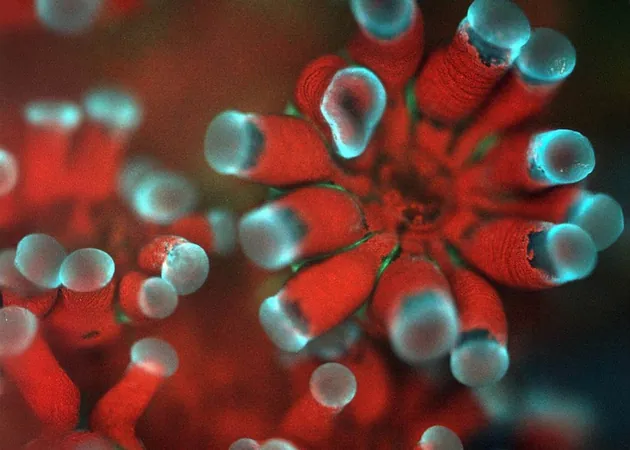
Revolutionary Microscope Unveils Coral Health Like Never Before
2025-07-07
Author: Ming
Coral Reefs on the Brink: A Closer Look
Coral reefs, the vibrant marine ecosystems that are under severe threat due to climate change, are experiencing alarming rates of decline. Warming oceans and pollution are triggering coral bleaching, a phenomenon where stressed corals eject their vital symbiotic algae, leading to a pale and lifeless reef.
Introducing the Game-Changer: BUMP
In a groundbreaking advancement, researchers from the Scripps Institution of Oceanography at UC San Diego have developed a state-of-the-art handheld underwater microscope. Named the Benthic Underwater Microscope (BUMP), this revolutionary device allows for real-time observation of coral photosynthesis in natural environments without any harm to the coral.
The Science Behind the Scenes
Using a technique called pulse amplitude modulated (PAM) fluorometry, the BUMP microscope measures the efficiency of the microscopic algae, known as symbionts, that live within coral tissues. These algae are crucial for coral survival, converting sunlight into energy through photosynthesis, which is essential for coral growth and the maintenance of reef structures.
Glowing Insights into Coral Health
The newly developed microscope reveals intricate details of coral health at an unprecedented scale. Coral symbionts, typically invisible to the naked eye, shine bright red under the microscope due to chlorophyll, allowing researchers to assess how efficiently they convert sunlight into energy.
Observing Coral Activity in Real-Time
During their studies across coral hotspots like Hawaii and the Red Sea, researchers discovered something astonishing: corals are not merely passive organisms. They exhibit dynamic behaviors, such as changing shape and contracting their tentacles to interact with their environment.
A New Era for Coral Conservation
This microscope represents a monumental breakthrough in monitoring coral health, crucial for early detection of stress signs in corals before they reach a critical tipping point. The research, aided by the National Science Foundation's funding, offers hope for developing effective strategies to combat coral decline and protect fragile marine ecosystems.
Beyond Corals: Expanding Applications
The capabilities of BUMP extend beyond coral observation. Scientists are also utilizing it to investigate other marine organisms reliant on photosynthesis, including baby kelp in California's coastal waters.
A Call for Continued Research Support
As the urgency to protect our oceans grows, it’s essential to continue funding scientific research that addresses these environmental challenges. The development of the BUMP microscope is a testament to the power of innovative technology in marine biology and conservation efforts.
Conclusion: The Future of Coral Ecosystems
With the powerful BUMP microscope, researchers now have a comprehensive tool to look deep into coral health, providing crucial insights that could lead to effective conservation strategies for one of the planet’s most vulnerable ecosystems.
The study detailing this advancement was published in the journal Methods in Ecology and Evolution.

 Brasil (PT)
Brasil (PT)
 Canada (EN)
Canada (EN)
 Chile (ES)
Chile (ES)
 Česko (CS)
Česko (CS)
 대한민국 (KO)
대한민국 (KO)
 España (ES)
España (ES)
 France (FR)
France (FR)
 Hong Kong (EN)
Hong Kong (EN)
 Italia (IT)
Italia (IT)
 日本 (JA)
日本 (JA)
 Magyarország (HU)
Magyarország (HU)
 Norge (NO)
Norge (NO)
 Polska (PL)
Polska (PL)
 Schweiz (DE)
Schweiz (DE)
 Singapore (EN)
Singapore (EN)
 Sverige (SV)
Sverige (SV)
 Suomi (FI)
Suomi (FI)
 Türkiye (TR)
Türkiye (TR)
 الإمارات العربية المتحدة (AR)
الإمارات العربية المتحدة (AR)